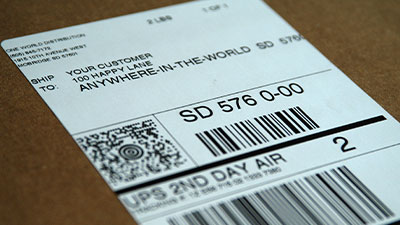Negative customer feedback is inevitable for any ecommerce business. How you respond to negative reviews and handle customer complaints is essential to keep your business thriving. It’s not just about receiving criticism; it’s about how you handle it. Responding to negative reviews isn’t merely a reactive measure—it’s a crucial component of online reputation management.
Online reviews hold significant sway over purchasing decisions and customer trust. A single adverse comment can ripple across your audience, affecting their perception of your brand. Research shows that 95% of consumers read reviews before making purchases, and negative reviews can quickly sway potential buyers.
95%
of consumers read reviews before making purchases.
This article provides insightful tips on how to handle negative customer feedback online. Through strategic response methods, we’ll explore ways to address grievances and turn them into opportunities for brand enhancement and customer loyalty. Whether dealing with issues related to order fulfillment, delivery times, or personalization services like embroidery and engraving, mastering the art of responding can transform potential setbacks into triumphs.
Armed with techniques drawn from years of customer service expertise, including our call center services offering support via phone, email, and live chat, we guide you through effective strategies to respond to negative reviews with professionalism and precision. Understanding these methods empowers you to safeguard your brand’s reputation and foster enduring consumer confidence.
Negative feedback, particularly in ecommerce, refers to any comment or review that highlights customer dissatisfaction. This feedback often comes in the form of low ratings, critical comments, or complaints about products or services. Customers spend up to 31% more on products with great reviews, and 86% hesitate to purchase from online stores with negative reviews. It is crucial for businesses to understand the details of such reviews to effectively plan how to respond to negative feedback.
Ignoring negative feedback can have significant consequences:
93%
of consumers agree that their purchasing decisions depend on reviews from other people.
Addressing how to reply to negative feedback involves recognizing these pain points and implementing strategies that turn criticisms into opportunities for improvement and relationship building.
When it comes to managing your ecommerce reputation, the speed of your response to negative feedback is crucial. 53% of customers expect businesses to respond to negative reviews within a week, while 87% do not address them at all. Customers today expect swift replies, and meeting these expectations can significantly influence your brand’s perception.
Incorporating a strategy for responding to negative reviews with urgency not only addresses the specific complaint but also reinforces trust in your brand. By consistently meeting customer expectations through timely engagement, you transform challenges into opportunities for strengthening customer relationships.
When learning how to respond to negative reviews, the first step is acknowledging the customer’s experience. Recognizing their feedback validates their feelings and demonstrates that your business values customer input. This step is crucial in handling negative feedback as it sets the stage for a constructive dialogue.
 Crafting sincere apologies is an art that requires careful consideration. An apology should be genuine and address the specific issues the customer raises. Incorporate phrases that show empathy, such as “We understand your frustration” or “We apologize for not meeting your expectations.” This approach helps rebuild trust, which is essential for maintaining long-term relationships with your clientele.
Crafting sincere apologies is an art that requires careful consideration. An apology should be genuine and address the specific issues the customer raises. Incorporate phrases that show empathy, such as “We understand your frustration” or “We apologize for not meeting your expectations.” This approach helps rebuild trust, which is essential for maintaining long-term relationships with your clientele.
Demonstrating empathy in your responses reinforces the notion that your brand cares about each customer’s unique situation. Beyond a simple apology, showing understanding and concern can transform a negative interaction into an opportunity for positive engagement. An empathetic response addresses the immediate issue and enhances the customer experience by making them feel heard and valued.
Incorporating these strategies when responding to bad reviews helps align with customer expectations and fosters a positive reputation for your ecommerce business. Mastering the art of acknowledging and apologizing effectively positions you to handle negative feedback online successfully, turning potential setbacks into opportunities for growth and improvement.
Knowing how to handle negative reviews is essential for keeping customer trust and loyalty. One of the best ways to do this is by taking responsibility for problems, which is what customers expect when it comes to accountability. Research by Esteban Kolsky suggests that when customers are dissatisfied, 13% of them will voice their complaints to 15 or more people. Taking responsibility and addressing customer frustrations will help you prevent negative word-of-mouth sentiment about your brand.
13%
of customers will voice their complaints to 15 or more people
By using these strategies to deal with negative feedback online, you address immediate customer worries and build long-term brand credibility. Taking responsibility shows that your brand is dedicated to providing excellent service, which leads to better relationships with customers and increased trust.
Responding to negative reviews effectively requires more than just acknowledging the problem; it demands actionable solutions. Providing concrete resolutions like store credit or discounts not only addresses the customer’s immediate concerns but also demonstrates your commitment to quality service. You can turn a dissatisfied customer into a loyal advocate by responding to bad reviews with tangible offers.
 Encouraging follow-up conversations offline is another strategic approach to handling negative feedback. This allows for a more personalized dialogue, helping to resolve issues out of the public eye and ensuring that customer expectations are met. Engaging customers directly reassures them that their satisfaction is paramount and will help resolve issues quickly.
Encouraging follow-up conversations offline is another strategic approach to handling negative feedback. This allows for a more personalized dialogue, helping to resolve issues out of the public eye and ensuring that customer expectations are met. Engaging customers directly reassures them that their satisfaction is paramount and will help resolve issues quickly.
Enhancing customer relationships through effective problem-solving is at the heart of handling negative feedback online. By focusing on resolving issues rather than justifying them, you pave the way for improved interactions and long-term loyalty. Whether through timely replies or personalized solutions, addressing negative feedback with empathy and efficiency solidifies your brand’s reputation as customer-centric and responsive.
These strategies underscore the importance of proactive engagement in managing customer perceptions and fortifying brand trust.
When dealing with negative reviews, personalized responses are a powerful tool in your arsenal. Customizing your replies to address specific complaints shows that you understand the customer’s unique situation and value their feedback. Such tailored communication can significantly enhance your brand’s credibility.
Proactive customer service can turn a dissatisfied customer into a loyal advocate. By addressing the specifics of their concern, you validate their experience and show your commitment to resolving their issues. This approach can:
To effectively personalize responses, consider these techniques:
By crafting thoughtful, individualized responses, you signal to customers that they are valued beyond just a transaction. This attention fosters stronger connections and encourages repeat business. Personalized responses reinforce positive perceptions of your brand and ensure a robust foundation for long-term customer relationships.
Addressing negative feedback is not just about acknowledging and apologizing; it’s crucial to demonstrate action. Customers need assurance that their concerns are taken seriously and that meaningful steps are being implemented to rectify any issues.
When responding to negative reviews, specify the corrective measures undertaken. This could include product design modifications, service delivery enhancements, or staff training sessions to prevent recurrences. Clear communication reassures customers of your proactive approach.
Illustrate your dedication to continuous improvement by sharing future plans. Mention ongoing evaluations or upcoming initiatives designed to elevate the customer experience. This projects an image of a brand committed to evolving with customer expectations.
Transparency builds trust. Outline your business’s steps in response to feedback, such as operational changes or policy revisions. For instance, if a common complaint involves delayed shipping, you could mention that you have implemented a new logistics system to expedite the process. Sharing such information reinforces your commitment to transparency and helps rebuild trust with dissatisfied customers.
By showcasing the actions taken, you not only address individual grievances but also reinforce a culture of accountability and progressiveness within your organization. This method instills confidence among existing and potential customers, positioning your brand as one that values transparency and customer satisfaction above all else.
 Moreover, it’s essential to turn mistakes into meaningful customer experiences. Each piece of negative feedback can serve as a valuable insight into areas needing improvement, allowing you to refine your offerings and enhance customer satisfaction.
Moreover, it’s essential to turn mistakes into meaningful customer experiences. Each piece of negative feedback can serve as a valuable insight into areas needing improvement, allowing you to refine your offerings and enhance customer satisfaction.
In addition, establishing an effective employee feedback loop can further strengthen your commitment to improvement. By actively seeking and implementing employee suggestions, you foster a culture of inclusivity and leverage their insights for better customer service.
It’s essential to stay professional when dealing with negative reviews. The way you communicate in these situations can greatly affect how your brand is viewed by both the unhappy customer and potential future buyers.
When responding to negative feedback online, using a professional tone is absolutely necessary. It shows that you respect the customer and take their concerns seriously, which reinforces your dedication to resolving problems. This level of professionalism should be consistent across all platforms, ensuring that every response reflects your brand’s commitment to keeping customers happy.
Negative reviews can sometimes feel like personal attacks, but it’s crucial to keep your emotions in check. Here are some techniques you can use:
How you handle negative feedback sets an example for your team. Encourage polite responses by:
These tips on managing negative customer feedback online improve your reputation and empower your team to become skilled at responding to bad reviews efficiently and professionally.
Transforming satisfied customers into brand advocates is vital to managing your online reputation effectively. Encouraging positive reviews not only bolsters your brand image but also provides balance to any negative feedback you might encounter. By leveraging happy customer experiences, you can shift the narrative in your favor.
By prioritizing these strategies, you align your business with customer expectations, ensuring that their voices are heard and valued while managing how to effectively respond to negative reviews.
Establishing a robust review management strategy is crucial for maintaining brand integrity and fostering customer trust. Here’s how you can develop an effective plan:
Utilize advanced software tools to track and analyze customer feedback in real-time. This ensures you never miss a critical review that could impact your brand’s reputation.
Centralize your response efforts through a dedicated team or platform. This allows for consistent communication and efficient handling of all customer interactions, ensuring every review receives the attention it deserves.
Develop clear guidelines on how to address different types of feedback. Craft templates for common issues while allowing room for personalization to maintain authenticity.
Use data analytics to identify trends in customer feedback. Understanding common pain points helps prioritize areas for improvement and informs business decisions.
Seamlessly integrate your review management strategy with your customer service operations. For instance, OWD’s call center is integrated for comprehensive support across phone, email, and live chat channels.
Using OWD’s Call Center Services gives you an advantage in dealing with negative customer feedback online. With these services, you can ensure quick, professional, and personalized responses that resolve complaints and create opportunities for customer engagement and loyalty.

Fulfillment costs are based on three criteria: size, weight and delivery time.
OWD offers five service levels: economy (7-10 days); Standard (5-7 days), 2-Day, Overnight and International.

Example Weight: 1 ounce
Fulfillment | Postage | Total |
|---|---|---|
$1.75 | $3.64 | $5.39 |
Lorem ipsum dolor sit amet, consectetur adipiscing elit. Ut elit tellus, luctus nec ullamcorper mattis, pulvinar dapibus leo.
Lorem ipsum dolor sit amet, consectetur adipiscing elit. Ut elit tellus, luctus nec ullamcorper mattis, pulvinar dapibus leo.
Lorem ipsum dolor sit amet, consectetur adipiscing elit. Ut elit tellus, luctus nec ullamcorper mattis, pulvinar dapibus leo.
Lorem ipsum dolor sit amet, consectetur adipiscing elit. Ut elit tellus, luctus nec ullamcorper mattis, pulvinar dapibus leo.
Lorem ipsum dolor sit amet, consectetur adipiscing elit. Ut elit tellus, luctus nec ullamcorper mattis, pulvinar dapibus leo.
DDU means Delivery Duty Unpaid – where the buyer pays for all of the import fees at delivery.
Unexpected import fees give buyers sticker shock – not good. When they refuse to pay, you’ve lost a sale and must pay to return your product, or abandon it.
DDU is an old idea whose time has passed. For these reasons and more, OWD doesn’t recommend DDU for e-com sellers.
DDP is an acronym for Delivery Duty Paid. DDP means that the seller pays for all the duties and import fees.
With DDP, your customers won’t be surprised with unexpected customs charges – good!
With OWD’s landed cost calculator, your foreign customers will know exactly what their various VAT, customers and duties will cost. No unhappy surprises.
For large-scale operations needing a full solution in Europe, there’s OWD Europe, based in Amsterdam.

OWD handles phone calls, e-mails and web chat eighteen hours a day from our own state-of-the-art facility.
We’ll handle your inbound sales and customer service contacts.
You get career agents who speak American English and know how to sell.
$99 gets you 200 calls, e-mails or chats handled every week.
You get your own phone number and custom e-mail.
We do a lot more. Call for details.

The Voice of Your Brand
OWD’s all-inclusive Returns service provides simplicity and high-end customer service. OWD includes a pre-printed return label as part of your packing slip. Your customer need only drop it in the mail.
What’s included: packaging slip with return label, QC inspection, re-bag, re-tag and return to stock. What’s excluded: postage cost, poly bags and any special packaging.
